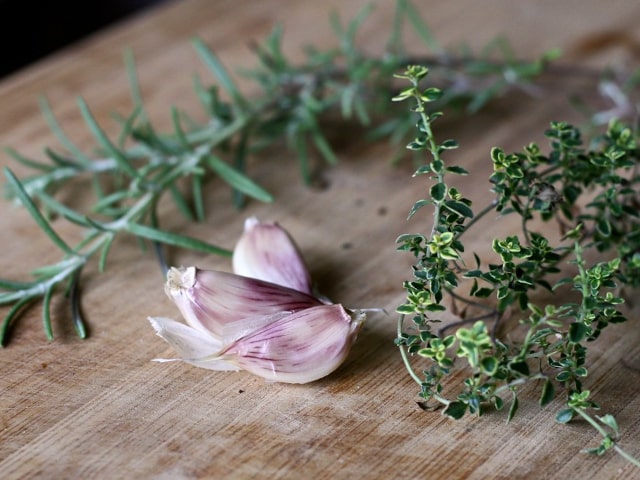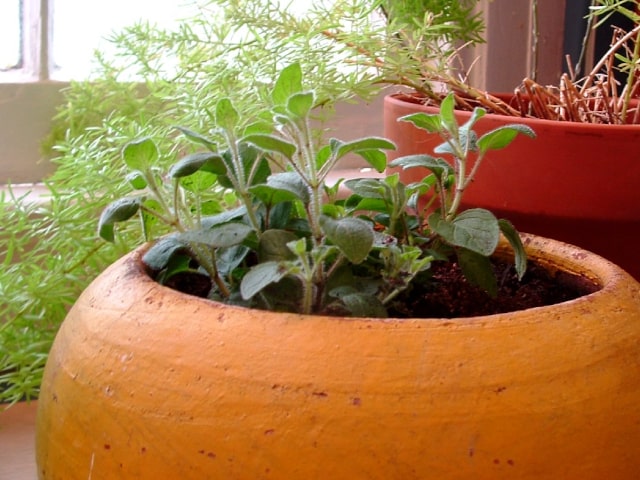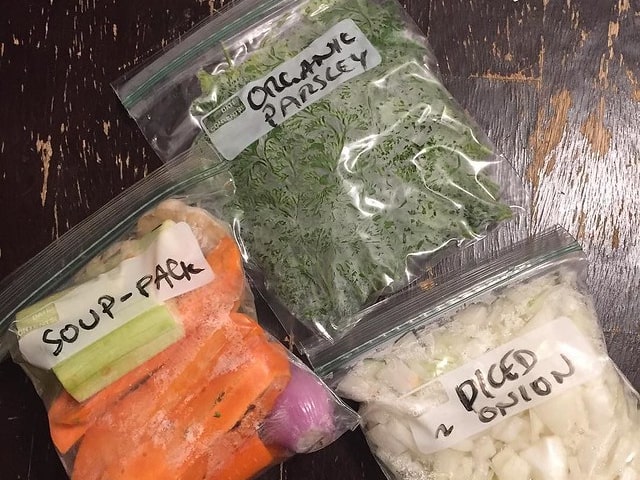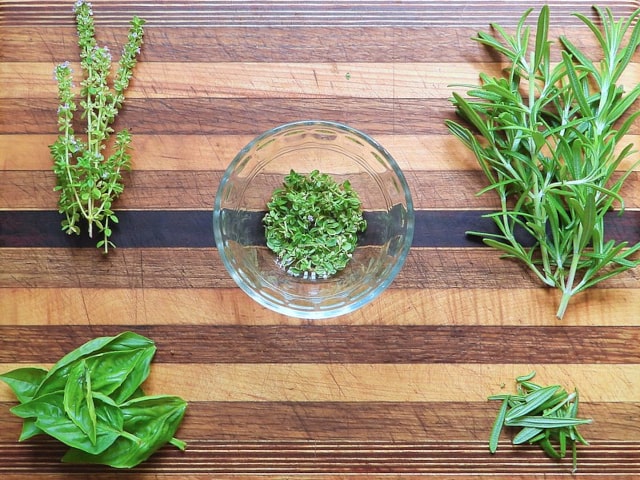
Herbs are excellent plants to grow in your garden because they can be used in many different ways and for preparing many different meals. Spice up your recipes and prepare tasty meals with your homegrown herbs. Herb gardening is usually not difficult, but it's always useful to know a few tricks. Make your herbs thrive so you can have a great harvest. You should also know how to use your herbs in the kitchen to make numerous tasty dishes.
The best thing about growing herbs is that it doesn't require much space. You can grow certain herbs even on your kitchen window. Many herbs are very easy to grow, you don't really need some special skill to be a successful herb gardener.
Here is a list of the most popular herbs you can grow on your own, and also some ideas how to use these herbs in your kitchen. Some of them are very popular and widely used all around the world while the others are lesser known but still very tasty and will add a lot of flavor to your dishes.
Thyme (Thymus vulgaris)
Thyme is probably one of the most popular herbs you can grow. It has heavily scented leaves you can use in many different ways in your kitchen. Some ideas include preparing soups, vegetables, season fish and shellfish, or you may use it for poultry stuffing.
Thyme is a perennial plant that can grow up to 1 foot in height. It is best grown in climate zones 1-24.
Basil (Ocimum basilicum)
Another popular herb you can use in many different ways. It will lend a sweet-spicy flavor to your sauces and pesto.
Basil is an annual plant and it can grow around 2 feet in height. It can be grown in basically all climate zones.
Mint (Mentha)
This is yet another popular herb. A great advantage to mint is that it can be used in many different ways and it's also extremely easy to grow it. It is a great herb for beginner gardeners because it doesn't require much care to thrive.
Mint can be used in teas, salads, cool drinks and soups. Popular ones include peppermint and spearmint. This plant can spread really fast through the underground stems and it can easily be grown in pots. Mint is a perennial that can grow in all climate zones.
Parsley (Petroselinum crispum neapolitanum)
Another very popular herb that will find its use in every home. There are different varieties you can grow. Keep in mind that flat-leafed Italian parsley will add more flavor than the curly-leafed French variety.
Parsley can grow up to 2 or 3 feet in height. It can be grown in all climate zones.
Sage (Salvia officinalis)
Sage has earthy, musky leaves that are great for Italian meat dishes, salads (especially Middle-Eastern ones) and also for poultry stuffing.
This plant forms a mound that is typically 1 to 3 feet tall. It is best grown in climate zones 2-24 and H1-H2.
Rosemary (Rosmarinus officinalis)
Rosemary has beautiful, aromatic leaves that can be used in many different ways. They work great in season meats, soups and sauces. There are many varieties to choose from. One of the best varieties many chefs use is "Tuscan Blue".
"Tuscan Blue" can grow about 7 feet in height. Rosemary should be grown in climate zones 4-24 and H1-H2.
Sweet marjoram (Origanum majorana)
This herb has characteristic oval gray-green leaves. It is a milder and more floral herb than oregano.
This plant is a perennial in zones 8-24 and annual elsewhere. It can grow to about 1-2 feet in height.
Chives (Allium)
Chives is green and glasslike. It has clusters of rose purple or white flowers in the spring. This is a perennial plant and it can grow about 12 to 24 inches in height. It is best grown in climate zones 1-24 and H1-H2.
Cilantro (Coriandrum sativum)
Cilantro has fresh and tasty leaves that will add some great flavor to salsa and guacamole. This is an annual plant that grows around 1 1/2 feet in height. It can grow in all climate zones but it requires shade in the hottest climates.
Oregano (Origanum vulgare)
Oregano has really tasty leaves you can use fresh or dried. It will add some spice to many Spanish and Italian dishes such as pizza and ravioli.
Oregano plant can grow around 2 1/2 feet tall. This is a perennial plant and it grows best in climate zones 1-24.
Dill (Anethum graveolens)
Dill has feathery leaves you can sprinkle on grilled fish, sauces and salads. This is an annual plant and it can grow around 4 feet in height. It should be grown in climate zones 1-24.
French tarragon (Artemisia dracunculus)
French tarragon can be used both fresh and dried. It works great in salads and cooked dishes. This is a sprawling perennial that grows about 2 feet in height. It best grows in climate zones A1-A3, 2B-10 and 14-24.
Chervil (Anthriscus cerefolium)
This herb has leaves that have a flavor similar to that of a parsley with some overtones of anise flavor. It can be used in soups or salads. It grows best in climate zones 1-24.
Lemongrass (Cymbopogon citratus)
Lemongrass is a nice plant that pumps out grassy foliage you can use in your dishes. The foliage is characteristic by its strong lemon scent. It is a very popular herb for many Southeast Asian dishes.
This plant grows best in frost-free climates. It will thrive in zones 12-13, 16-17, 23-24 and H1-H2.
Hoja santa (Piper auritum)
Hoja santa (pronounced "oh-ha sahn-ta") means "sacred leaf." When leaves of this herb are chopped, they can be used in many different dishes. The most popular dishes that use Hoja santa to add some zest to them are green sauce (mole verde) and tamales in Mexican cousine.
This plant can reach about 6 feet in height. It is best grown in sunset climate zones: 8-9 and 14-24.
Shiso (Perilla frutescens)
This plant has interesting leaves that taste a bit like mint or cinnamon. They will add some great flavor to your salads.
This is a warm-season annual that can grow about 2 to 3 feet in height. It can be grown in all climate zones.
"Kieffer" lime (Citrus hystrix)
This plant is often sold as "Kaffir lime". It is commonly used in Thai kitchen. Its leaves are used in salads, soups and stir-fries.
This is a tree that can grow about 16 feet in height. It needs protection from wind and frost. It should be grown in zones 8-9, 12-24 and H1-H2.
Epazote (Chenopodium ambrosioides)
This plant has aromatic leaves. The scent and taste of the leaves remind of fennel and anise. You may use them fresh or dried to add some flavor to season black beans, enchiladas and tamales.
This is a perennial plant in climate zones 8-9 and 14-24 and it's annual elsewhere. It can grow about 2 feet in height.
How to Harvest Herbs
Here are a few tips you can use to get the most of the harvest. Herbs are typically not difficult to grow, but there are some things you can do to ensure a successful harvest:
- Make sure that you plant your herbs in a quality soil. It should be fast-draining and you should add some compost into the garden beds before you plant your annual herbs. If you wish to grow herbs in containers, use quality potting soil.
- Your newly planted perennial herbs need a lot of water. You should give them water regularly. Once they are established they typically can tolerate some drought, but not to the extreme. Annual herbs, on the other hand, need regular watering all throughout the growing season. Mint is a herb that prefers slightly moist soil, so you should pay attention to that.
- Most herbs will benefit from occasional supplemental feedings during the growing season. You may use an organic granular fertilizer for this purpose. If you wish to grow "Kieffer" lime, it's best to use a plant food specially made for citrus trees.
- To get the most of the harvest, it's important to snip fresh herbs as it develops new growth. Always take as much as you need at the moment. If you wish to grow lemongrass, cut of the thick, bulbous stems just above the crown on the ground level. Peel off outer sheath and use the bottom third of the plant for your dishes.
Kitchen Tips
Here are a few useful tips on how to use herbs in the kitchen:
- Herbs are great in salads and soups, but this isn't the only way you can use them. Be creative and try many different ways to use herbs in your meals.
- Add herbs to your sandwich. Use dill, tarragon and chervil to add a special taste to your mayonnaise. Add some minced red onion and celery to it. Stir this mixture into chopped roasted chicken and serve on bread or toasted croissants for a great sandwich.
- Use mint in your cocktails. To make a refreshing cocktail, mash some mint leaves with lime juice, minced ginger, rum and ice. Shake it well and strain into a cooler glass. Top the cocktail with ginger beer.
- Use "Kieffer" lime leaf to make a great soup. Mix it with lemon basil and add it to chicken and rice soup to add a special flavor to them. You may also sprinkle your soup with some sliced chiles and fresh cilantro leaves to make a Thai version of a classic soup.
- Use some chopped sage to make a special side dish. Fold the sage and blue cheese into mashed potatoes. Sprinkle it with some chopped toasted hazelnuts.
- Use herbs for your main dish. You can top a snapper or black cod with salsa verde, cilantro and epazote leaves. Or you may wrap a seasoned fish in an Hoja santa leaf and rub the outside of it with oil. You should grill the fish until it feels firm. Serve the fish with beans and rice.
Photo credit: Rebecca Sims




0 Comments